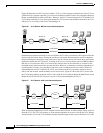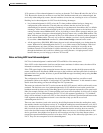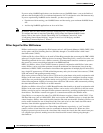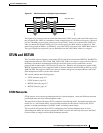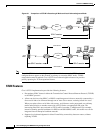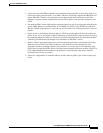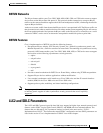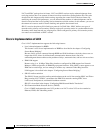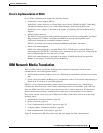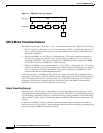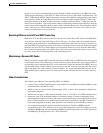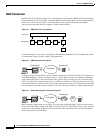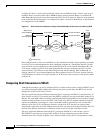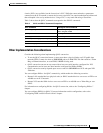
Overview of IBM Networking
LLC2 and SDLC Parameters
BC-218
Cisco IOS Bridging and IBM Networking Configuration Guide
LLC2 and SDLC package data in frames. LLC2 and SDLC stations require acknowledgments from
receiving stations after a set amount of frames have been sent before sending further data. The tasks
described in this chapter modify default settings regarding the control field of the data frames. By
modifying the control field parameters, you can determine the number of acknowledgments sent for
frames received and the level of polling used to determine available stations. In this manner, you can set
the amount of resources used for frame checking and optimize the network load.
SDLC is used as the primary SNA link-layer protocol for WAN links. SDLC defines two types of
network nodes: primary and secondary. Primary nodes poll secondary nodes in a predetermined order.
Secondary nodes then transmit any outgoing data. When configured as primary and secondary nodes,
our routers are established as SDLC stations.
Cisco’s Implementation of LLC2
Cisco’s LLC2 implementation supports the following features:
• Local acknowledgment for RSRB
This feature is used in our implementation of RSRB as described in the chapter “Configuring
Source-Route Bridging.”
Because LANs are now connected through RSRB and WAN backbones, the delays that occur are
longer than LLC2 allows for bidirectional communication between hosts. Our local
acknowledgment feature addresses the problem of delays, retransmissions, and loss of user sessions.
• IBM LNM support
Routers using 4- or 16-Mbps Token Ring interfaces configured for SRB support Lan Network
Manager (LNM) and provide all IBM bridge program functions. With LNM, a router appears as an
IBM source-route bridge, and can manage or monitor any connected Token Ring interface.
LNM support is described in the chapter “Configuring Source-Route Bridging.”
• SDLLC media translation
The SDLLC feature provides media translation between the serial lines running SDLC and Token
Rings running LLC2. SDLLC consolidates the IBM SNA networks running SDLC into a
LAN-based, multiprotocol, multimedia backbone network.
SDLLC is described in the chapter “Configuring IBM Network Media Translation.”
• ISO Connection-Mode Network Service (CMNS)
Cisco’s CMNS implementation runs X.25 packets over LLC2 so that X.25 can be extended to
Ethernet, FDDI, and Token Ring media.



